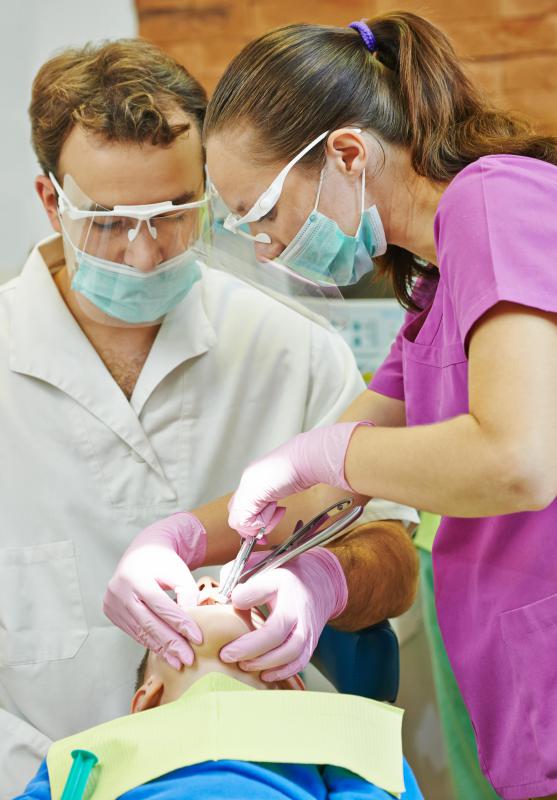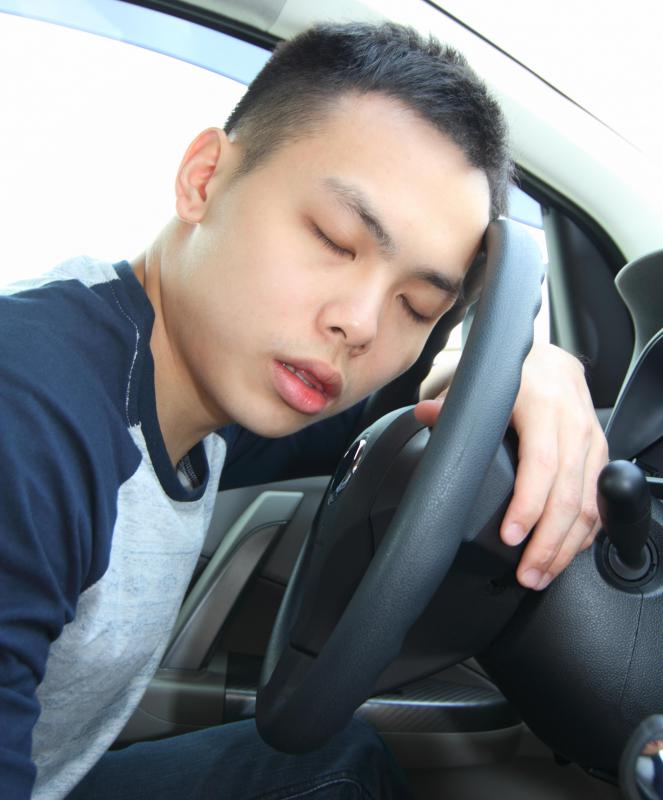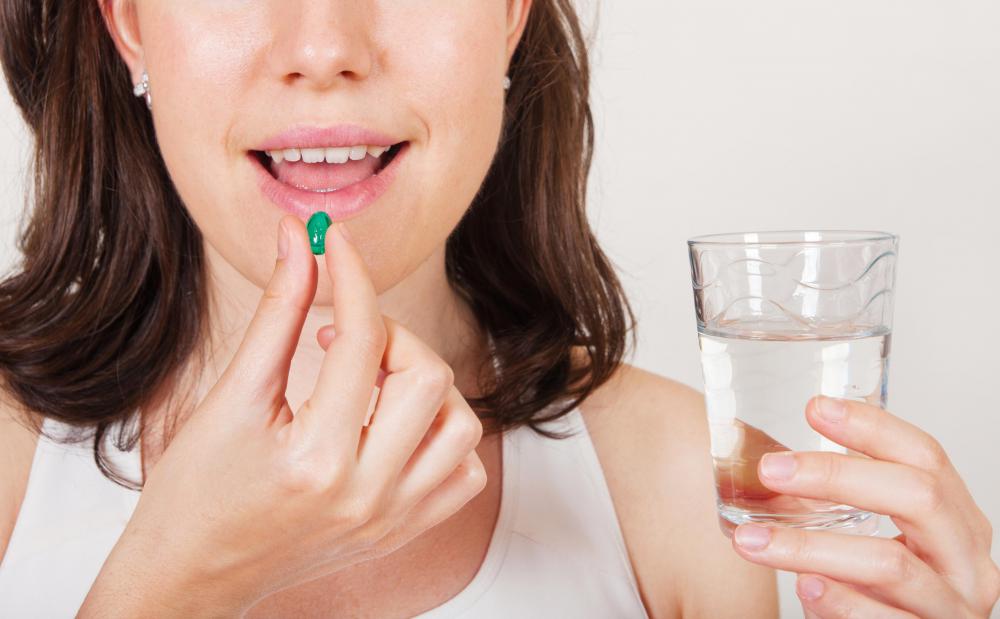At TheHealthBoard, we're committed to delivering accurate, trustworthy information. Our expert-authored content is rigorously fact-checked and sourced from credible authorities. Discover how we uphold the highest standards in providing you with reliable knowledge.
What is Oral Conscious Sedation?
Oral conscious sedation refers to a light sedation method that is achieved by taking medications by mouth. This is in contrast to achieving different levels of sedation with injection, intravenously, or by inhalation of different medicines. In oral conscious sedation, people are conscious and can answer questions or respond to commands, but the drugs used make it unlikely that people will remember the period of time when they were sedated. Medications employed reduce anxiety related to having medical procedures, creating relaxation and comfort for the patient. Oral conscious sedation is frequently used by the dental profession, where it may be referred to as sleeping dentistry, but it can be used for other minor medical procedures as well.
Sleeping dentistry, which is growing in popularity as a method for working with those who are afraid of dental procedures, tends to utilize several different medicines to achieve oral conscious sedation. The night before a procedure, patients are usually given a benzodiazepine, which they take before bedtime. This doesn’t produce strong sedation, but can help with sleep and reduce anxiety. The next day and an hour or two before going to the dentist office, patients are instructed to take another medication. The most common ones used are triazolam (Halcion®) or midazolam (Versed®).

These medications cause significant sedation, although oral conscious sedation is not as strong as general anesthesia. Still, when people take these medications, they cannot drive and they need someone else to take them to the dental or medical office. Such medications may also be combined with other drugs, including additional benzodiazepines or tranquilizers to further reduce anxiety, or pain medications like fentanyl. These might be administered at home or at the medical office. Occasionally, especially in dentistry, inhalation sedation with nitrous oxide can be added to produce more comfort.

A benefit of these medications is that they create an amnesic effect. People are unlikely to remember much about the time period in which they were sedated. As they gradually recover full consciousness, it may seem like very little time has passed. The level of sedation achieved is generally enough to significantly reduce anxiety, so that even the most fearful patients are able to undergo extensive dental procedures without feeling deep worry or concern.

There are, nevertheless, concerns about the growing use of oral conscious sedation in the dentistry field. Critics express apprehension about the lack of appreciation some dentists may show for the different ways in which people can respond to the common sedatives used. Sometimes people must repeat doses of sedating medications, and not all dentists or other medical practitioners may be prepared for emergency situations where sedation becomes too strong. Those interested in seeking this type of sedation should verify that dentists or doctors have equipment on hand, such as respirators and intubation materials, so that they can treat compromised breathing if the level of sedation becomes too strong.
AS FEATURED ON:
AS FEATURED ON:















Discussion Comments
Heavanet, this type of dental sedation is also beneficial because you will be alert and back to normal much sooner than if you had stronger sedation.
If you just need a mild sedation effect to have a dental procedure or oral surgery, oral conscious sedation is the best way to go. You will be relaxed for the procedure, yet you won't be completely anesthetized.
Post your comments